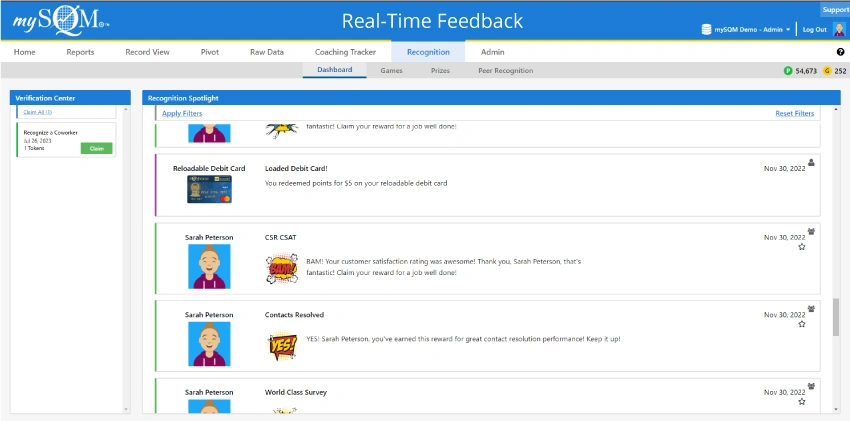When agents are trained specifically on how consumer behavior impacts interactions, they can better anticipate needs and customize their responses accordingly. This targeted approach enhances customer satisfaction and significantly boosts your business's performance.
What is Consumer Behavior?
Consumer behavior refers to the study of how individual customers, groups, or organizations select, buy, use, and dispose of goods, services, ideas, or experiences to satisfy their needs and desires. In simpler terms, consumer behavior is how people decide what to buy, how they buy it, and how they feel about their purchases.
Consumer behavior includes everything from why customers decide to buy something, how they make the purchase, what factors influence their choices, and how they feel about the product after using it. Understanding consumer behavior helps businesses create better products and marketing strategies that meet the needs and preferences of their customers.
What are the Stages of the Customer Decision-Making Process?
The customer decision-making process typically follows a series of steps that can be broadly categorized into various stages:
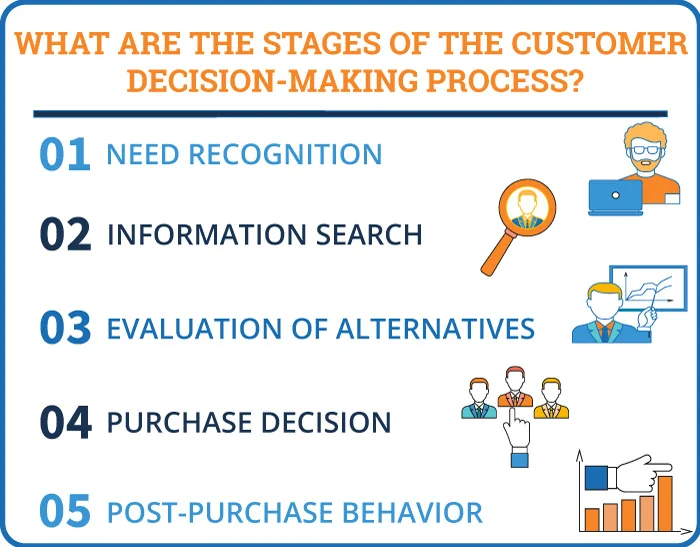
This is the initial stage where the consumer identifies a discrepancy between their current state and a desired state, which motivates them to make a purchase.
For instance, a customer realizes their current phone service is unreliable and decides they need a more dependable provider. They recognize a gap between their current service and the desired reliability they want.
Once a need is recognized, consumers seek information about the products or services that meet their needs. This can involve both internal memory checks and external searches (e.g., asking friends or reading reviews).
For example, a customer contacts a call center to inquire about different phone plans. They might also read online reviews, ask friends for recommendations, and compare providers' websites to gather more information.
Consumers compare products or services based on features, prices, quality, and other factors. This stage is crucial as it directly influences the purchase decision.
For example, the customer speaks with different call center agents from various providers to compare plans, prices, features, and service quality. They weigh each option's pros and cons to determine which best meets their needs.
After evaluating the options, the consumer makes a purchase decision. Factors influencing this decision include the product features and benefits, the terms of sale, the return policy, and the customer service reputation.
For instance, after careful consideration, the customer chooses a specific provider. They make the purchase decision based on the competitive pricing, positive reviews, and helpful information the call center agent provides.
After the purchase, the consumer evaluates the product based on their expectations and previous experiences. Their level of satisfaction or dissatisfaction can influence future purchase decisions and their likelihood of recommending the product to others.
For example, after switching to the new phone service, the customer evaluates their satisfaction. If the service meets or exceeds their expectations, they might recommend the provider to friends or leave a positive review. If it falls short, they might contact the call center again to address issues or even consider switching providers.
What are the Types of Consumer Buying Behavior?
Understanding different buying behaviors helps customer service agents manage expectations and tailor their methods to meet diverse customer needs. There are four primary types of consumer buying behavior, each of which requires different approaches from customer service agents.
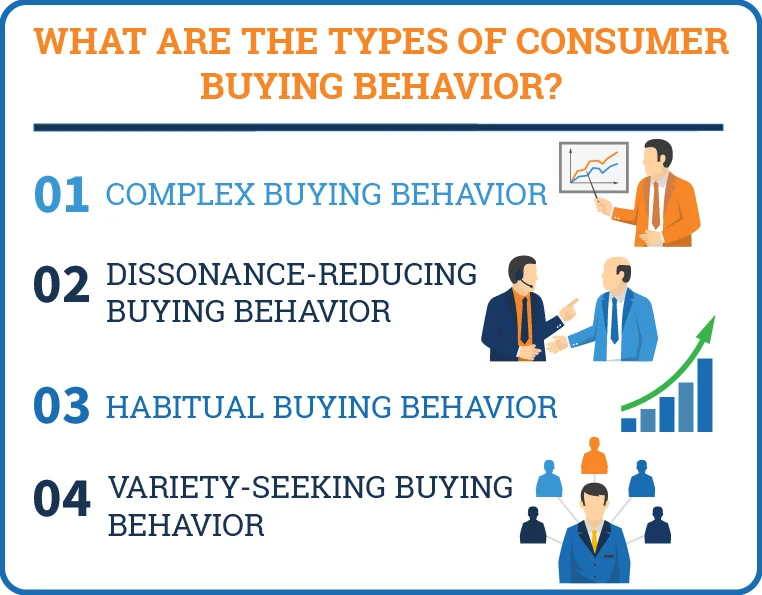
1. Complex Buying Behavior
Complex buying behavior occurs when consumers are highly involved in the purchase process, particularly when the items they are buying are expensive, risky, or highly self-expressive. Training should focus on:
- Teaching agents to provide detailed and expert knowledge
- Training agents to offer reassurance and support throughout the buying process
- Encouraging in-depth product training so agents can answer detailed queries
For example, a customer is considering purchasing a high-end home security system. Agents should be trained to thoroughly understand the various features, installation processes, and long-term benefits of different security systems. They should also offer reassurance by discussing the reliability and effectiveness of the system, providing case studies or testimonials, and guiding the customer through each step of the purchase.
By understanding these needs, agents can be better equipped to offer the comprehensive support that consumers require in these scenarios.
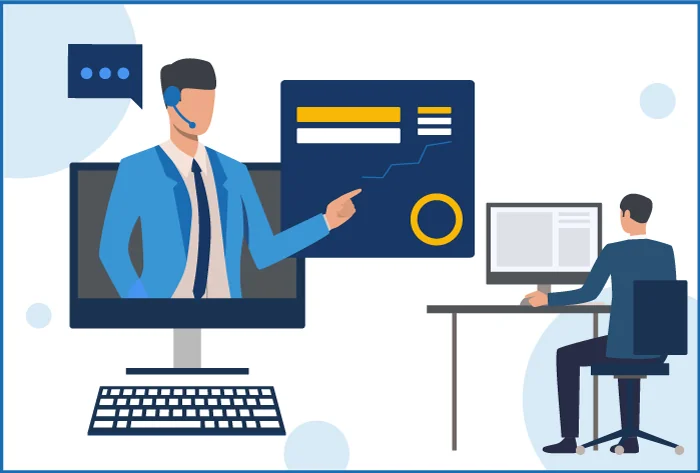
2. Dissonance-Reducing Buying Behavior
This behavior is characterized by buyers experiencing post-purchase dissonance, especially after purchasing products with little differentiation but significant risk. Agent training should emphasize the following:
- Effective communication skills to reassure customers
- Strategies to reinforce the customer's decision post-purchase
- Techniques for managing returns or complaints in a reassuring manner
For example, a customer buys a new washing machine and is anxious about whether they made the right choice. Agents should be trained to listen empathetically and reassure customers about their purchase by highlighting the product's key benefits and positive customer feedback. They should also learn to handle any issues or complaints in a manner that reassures the customer, such as offering troubleshooting tips or an easy return process if necessary.
Training in these areas helps reduce the dissonance customers may feel, leading to higher satisfaction and loyalty.
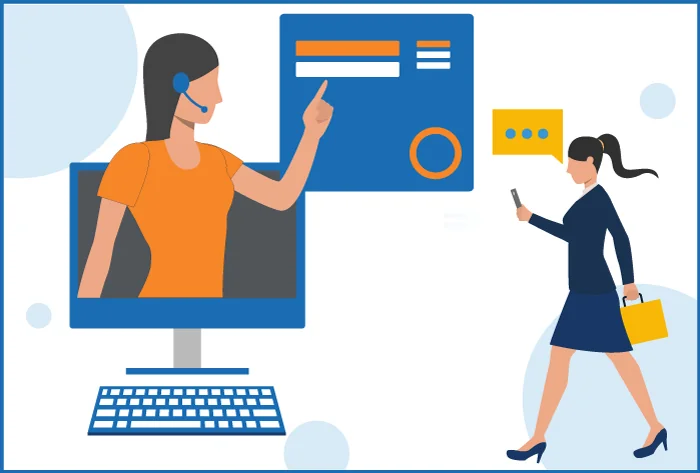
3. Habitual Buying Behavior
Habitual buying behavior involves situations where the consumer has low involvement and perceives little significant differences between brands. For these consumers, convenience and speed are often priorities. Agent training should, therefore, focus on:
- Enhancing efficiency and speed in service delivery
- Using predictive analytics to anticipate and expedite reorders
- Maintaining consistency in service to reinforce habit and brand loyalty
For instance, let's say a customer frequently orders the same brand of printer ink. Agents should be trained to quickly process reorders and handle inquiries efficiently, ensuring the customer's buying experience is smooth and hassle-free. Agents could also use predictive analytics tools to anticipate when the customer might need a reorder and proactively offer to place the order for them.
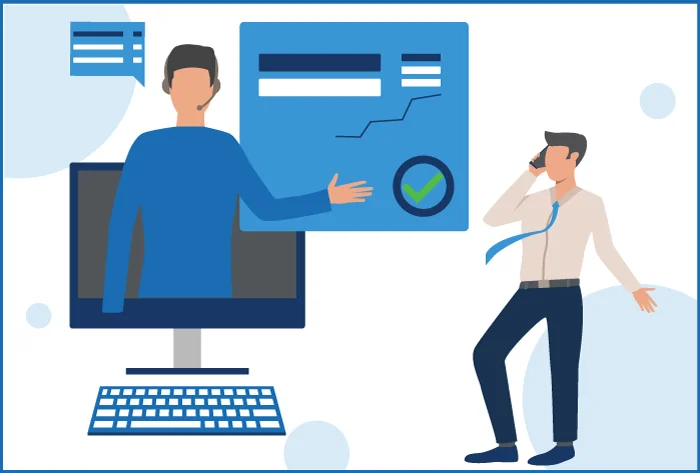
4. Variety-Seeking Buying Behavior
In this type of buying behavior, consumers often switch brands, usually because they seek variety and new experiences rather than due to dissatisfaction with the current product. Training agents to cater to these consumers should include:
- Strategies to engage and intrigue such consumers
- Updates on the latest product features that could attract brand switchers
- Personalized recommendations based on consumer history and preferences
For example, a customer frequently switches between different mobile phone plans. Agents should be trained to highlight new and exciting product features or promotions that might appeal to a customer's desire for variety. Agents could also use the customer's purchase history and preferences to provide tailored suggestions for new products that align with the customer's taste and interest in trying new things.
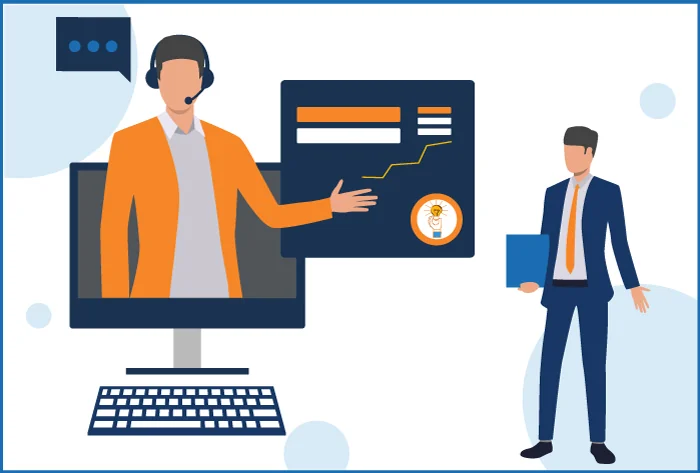
Why is it Important to Train Agents on Consumer Behavior?
Understanding the intricacies of consumer behavior helps agents to anticipate customer needs, tailor services, and handle a variety of customer interactions more effectively.
Training agents on consumer behavior significantly impact customer service levels in several ways:
- Increase in positive customer interactions: Agents with a robust understanding of consumer behavior can communicate and understand customers more effectively, leading to a more personalized and satisfying customer experience.
- Proactive problem solving: Equipped with knowledge about common behavioral patterns, agents can anticipate issues before they escalate and address them proactively, thereby reducing customer dissatisfaction and enhancing the overall service quality.
- Increased customer retention: Customers who receive high-quality, knowledgeable service tailored to their expectations and needs are more likely to remain loyal to a brand. This loyalty often translates to repeat business and positive word-of-mouth.
The benefits of training agents on consumer behavior extend beyond just improved customer service levels; they also directly contribute to the broader success of the business:
- Boost in sales: An agent who understands customer's needs and decision-making processes can effectively cross-sell and up-sell relevant products or services, thereby increasing sales volumes.
- Enhanced brand reputation: Companies that consistently provide excellent customer service and understand and anticipate the needs of their consumers stand to build a stronger, more positive brand reputation in the market.
- Data-driven insights: Agents trained in consumer behavior can provide valuable feedback from the front lines, which can be used to refine marketing strategies, product development, and overall business strategies.
Integrating consumer behavior training into agent development programs is essential. This strategic approach positions a business to better meet the needs of today's informed and demanding consumers and sets the stage for sustained growth and competitiveness in a crowded market.
How to Train Agents on Consumer Behavior?
To effectively align customer service with consumer preferences and expectations, it's crucial to train agents to understand and anticipate consumer behavior. Various strategies can be implemented for this purpose, enhancing the agent's ability to engage and satisfy customers.
Conducting Market Research
The first step in training agents is providing them with insights from robust market research. Understanding your target market's demographic, psychographic, and behavioral traits enables agents to tailor their communication and problem-solving tactics accordingly. Training should include sessions on:
- Analyzing market research reports and consumer surveys
- Understanding industry trends and their implications on consumer behavior
- Applying real-time data and analytics to personalize customer interactions
This knowledge gives agents a more profound comprehension of their target audience and the strategies that might be most effective in various situations – a fundamental component in elevating customer service standards.
Creating Customer Personas
Customer personas are fictional characters representing the different user types within a targeted demographic that might use a company's product or service. Training agents to recognize and adapt to these personas can significantly enhance their ability to connect with customers on a personal level. Key elements of this training should include:
- Development of detailed personas based on market research
- Role-playing exercises to practice different scenarios
- Use of personas to anticipate customer needs and preferences
By familiarizing agents with typical consumer profiles, they become more adept at predicting issues, personalizing solutions, and improving the customer experience overall.
Providing Ongoing Training and Support
Continuous learning is vital in keeping pace with changing consumer behaviors and market conditions. Ongoing training ensures that customer service agents do not stagnate in their skills or knowledge. Components of an effective ongoing training program include:
- Regular updates on new consumer behavior trends and insights
- Refresher courses on core customer service skills
Support doesn't just end with training; it should also include real-time assistance and feedback, enabling agents to continually refine their approaches and techniques.
For example, mySQM™ QA Software's Real-Time Recognition program awards points based on post-call surveys and QA performance to motivate agents to deliver great CX. Award points are captured in real-time, converted to dollars, and redeemed using an SQM debit card to recognize excellent performance financially.
